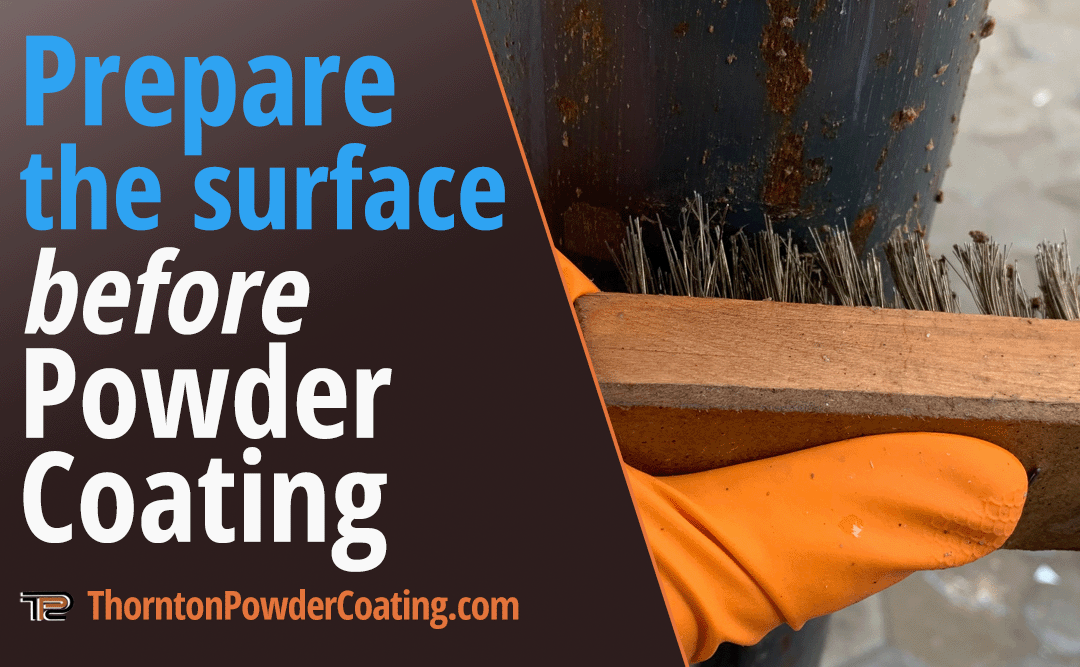Industrial powder coating is a great way to protect and enhance the appearance of metal objects. However, it is essential to properly prepare the object’s surface before applying the powder coating. This will ensure that the powder coating adheres properly and provides long-lasting protection.
The following steps are essential for preparing a surface for industrial powder coating:
Clean the surface
The object’s surface must be clean and free of dirt, grease, oil, and other contaminants. This can be done with various methods, including solvent, detergent, and vapor de-greasing. The best solvent for prepping metal to be powder coated is a matter of opinion, but some of the most popular choices include:
- Acetone
- Methyl ethyl ketone (MEK)
- Toluene
- Denatured alcohol
- Mineral spirits
These solvents are all effective at removing grease, oil, and other contaminants from metal surfaces. They also have a high evaporation rate, which is important for powder coating, as it allows the powder to adhere properly to the surface.
The best solvent for your specific project will depend on the type of metal you are working with, the severity of the contamination, and your personal preferences. If you are unsure which solvent to use, it is always best to consult with a professional.
Remove any rust or corrosion
If there is any rust or corrosion on the surface, it must be removed before applying the powder coating. There are a few different ways to remove rust or corrosion from metal. Here are some of the most common methods:
Mechanical methods: These methods use abrasives to physically remove the rust or corrosion. Some common mechanical methods include wire brushing, sanding, and scraping.
Chemical methods: These methods use chemicals to dissolve the rust or corrosion. Some common chemical methods include using vinegar, citric acid, or a commercial rust remover.
Electrochemical methods: These methods use an electric current to remove the rust or corrosion. This method is often used for large or complex objects.
The best method for removing rust or corrosion will depend on the severity of the problem and the type of metal you are working with. If the rust is light, you may be able to remove it with a mechanical method. If the rust is more severe, you may need to use a chemical or electrochemical method.
Degrease the surface
Once the rust or corrosion has been removed, the surface must be de-greased. This can be done with a solvent cleaner or a detergent cleaner.
De-greasing is the process of removing grease, oil, and other contaminants from a surface. This is an important step in the powder coating process, as any grease or oil on the surface will prevent the powder coating from adhering properly.
There are a few different ways to de-grease a surface to be powder coated. One common method is to use a solvent cleaner as mentioned above. Solvent cleaners are available in both aerosol cans and pump-spray bottles. To use a solvent cleaner, simply spray the cleaner onto the surface and allow it to sit for a few minutes. Then, wipe the surface clean with a clean cloth.
Another method of de-greasing is to use a pressure washer. Pressure washers can be used to remove grease and oil from a surface quickly and easily. However, it is important to use a pressure washer that is set to a low pressure setting, as a high pressure setting can damage the surface.
Once the surface has been de-greased, it is important to allow it to dry completely before applying the powder coating. If the surface is not dry, the powder coating will not adhere properly.
Inspect the surface
Once the surface has been cleaned and de-greased, it should be inspected for any remaining contaminants. If any contaminants are found, they must be removed before proceeding.
Apply the powder coating
The powder coating can be applied by spraying or electrostatic spray. The powder coating should be applied in a uniform layer.
Cure the powder coating
Once the powder coating has been applied, it must be baked. The baking process will cure the powder coating and harden it.
These steps ensure your metal objects are adequately prepared for industrial powder coating. This will result in a long-lasting and durable finish.
Here are some additional tips for preparing a surface for industrial powder coating:
- Use clean, dry cloths and brushes to clean the surface.
- Avoid using abrasive cleaning methods, as this can damage the surface.
- If the surface is heavily contaminated, it may be necessary to use a chemical stripper to remove the contaminants.
- Be sure to scrutinize the surface after cleaning to ensure that all impurities have been removed.
- Apply the powder coating in a uniform layer.
- Bake the powder coating according to the manufacturer’s instructions.
By following these tips, you can ensure that your metal objects are adequately prepared for industrial powder coating and that you will get the best possible results. For more information, check out our Frequently Asked Questions section.

